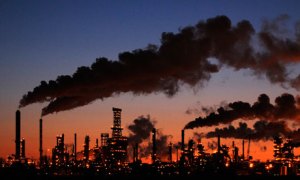Rio+20 is upon us and I haven’t posted or put any real thought or effort into the Rio+20 excitement, despite the Rio + 20 summit being hailed as a “wonderful, green and strategic” decision making moment for the world! Does this make me a bad “greenie” or put me in the box with people who don’t care about the planet or nature or the green economy or pandas….?
I can assure you that I am very concerned about the development path/ economic trajectory that we are on. This despite the assurances and re-assurance from multinationals, corporates and governments that;
- sustainability and equity issues are being mainstreamed
- business and government are working towards solutions for the pressing issues of sustainable and equitable development
- We are in fact slowly transitioning to a greener economy
“Rome was not built-in a day” but how many more summits, conferences, COPs, protocols, accords agreements,laws etc do we need before we are able to see any real and tangible sustainable development? The fact that these conferences and summits etc attract some of the worlds greatest development minds, authorities and governments that meet (over and over again) to try to sort out the various development challenges that we face should indicate that the processes that we use to address these development challenges may not be working? maybe it is time for something else?
This week, up to 100,000 people are streaming into Rio de Janeiro for the year’s biggest international event – the UN Conference on Sustainable Development to be held on 13-22 June. (M Khor)
With this in mind lets look at the a few issues that should be but will in all likelihood not be fully or adequately addressed or resolved at Rio+20;
- Fossil fuel subsidies: do we really need to subsidise one the key things that is responsible for a great many of our environmental problems?
- Emissions targets: who gets which piece of the pie?
- Tipping points and pollution and the degradation of natural resources and landscapes: It is a well-known fact that we have to stop and redress the pollution and degradation.
- Equity and access to natural resources: Define fair, access and resource?
- Green Economy: what is the definition? is this the silver bullet/ solution? or do we need something else
- Food and resource security and scarcity: overconsumption, in efficient production methods etc
- Full informed participation of affected stakeholders: better community participation: is it only government and business that know what is good for the rest of us?
What I am basically saying is that assurances of governments, the champagne environmentalists, the green-bling-brigade, the development set etc I am still not convinced that we are achieving much development impact by hosting summits, sitting around and arguing the format of draft agreements and accords.
While I will keep my fingers (and toes) crossed for some exciting decsions and actions resulting from RIO+20, I will not hold my breath or drop what I am doing to follow the developments of the summit. We need to see action and change, not more meetings about meetings etc ….
Some additional reading should you be interested in other views on Rio+20:
Can Rio Solve the Worlds problems?
Human Impacts Institute Article on Rio+20














